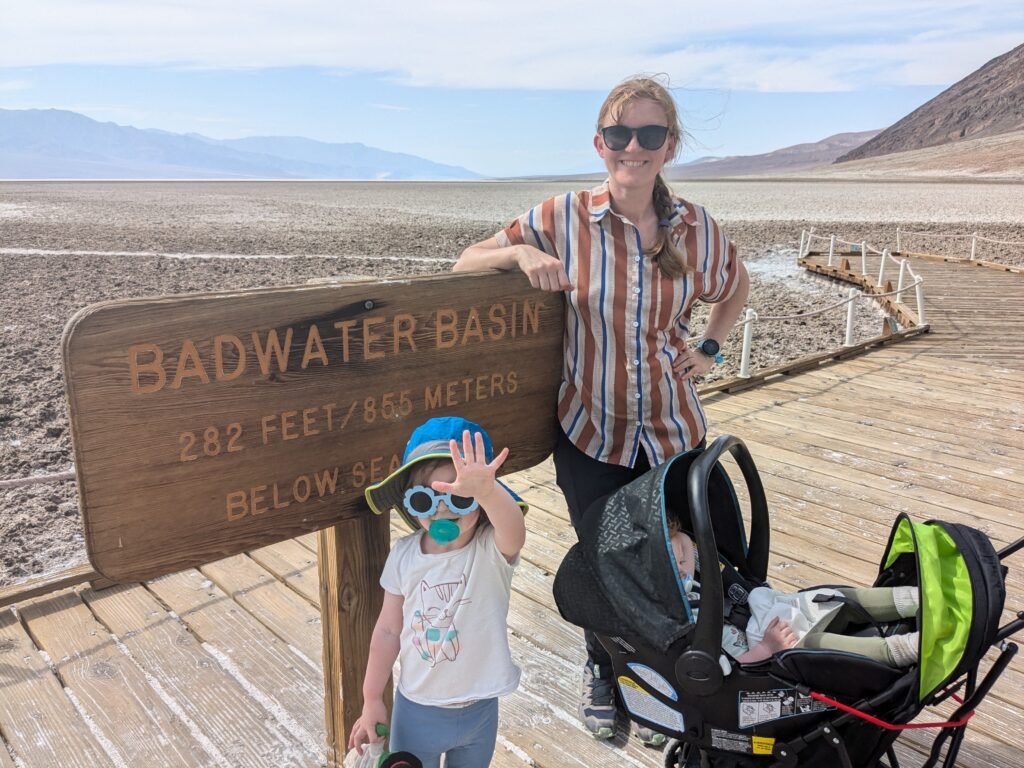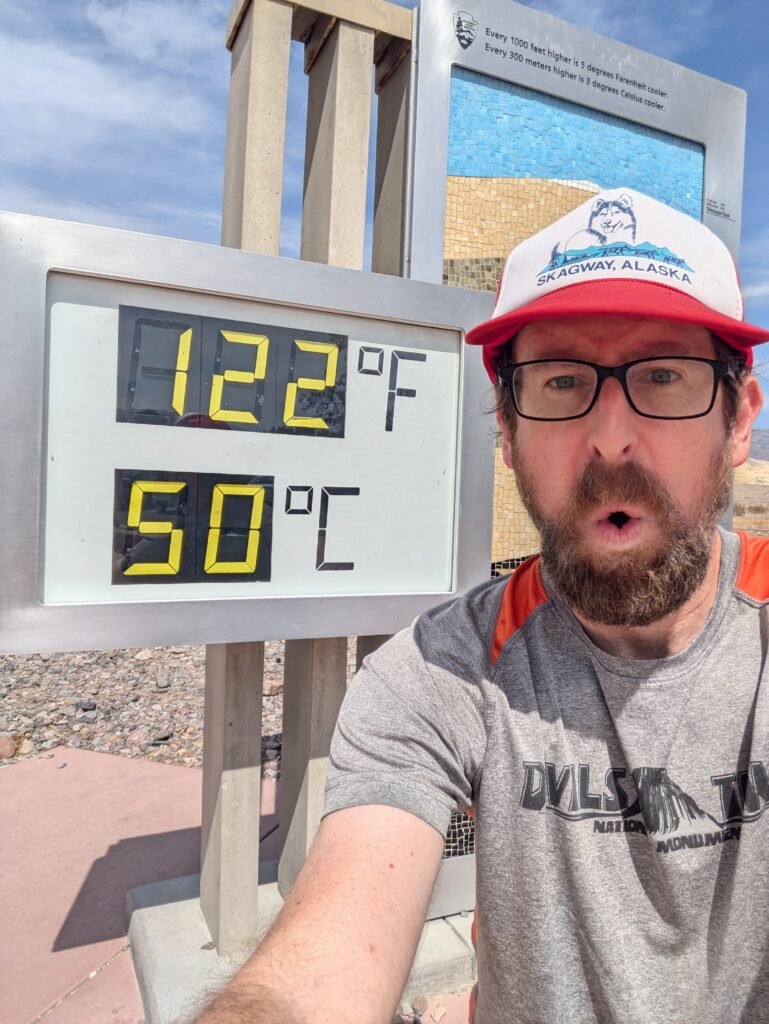
Adiabatic Heating
Furnace Creek at Death Valley National Park holds the record for hottest place on Earth. In 1913, the spot hit 134 degrees Fahrenheit!
The park is home to Badwater Basin, the lowest point in North America, which is 282 feet below sea level. Death Valley is just 85 miles from Mount Whitney, the High Point of the contiguous United States, which tops out at 14,505 feet. Whitney’s mean daily maximum temperature in July is 55 degrees Fahrenheit. Whitney is certainly no Furnace Creek.
Why is Death Valley so hot?


Part of the answer comes from its geography. Death Valley’s very low bottom is surrounded by high mountain ranges, creating an oven-like bowl. The desert floor is largely naked of vegetation, which means more of the sun’s heat hits the ground and radiates outward again. Hot air rises, which usually allows for a cooling effect, but, in Death Valley, the air cannot escape the mountains before it cycles toward the floor anew. The bowl keeps large-scale winds from snatching any of the area’s air, keeping all the heat inside.
Death Valley is also under 200 miles from the ocean. This distance would usually be close enough to bring moisture, but California’s topography conspires against anything that loves water in Death Valley. When water-laden air hits a range, it has to go over the crags. In doing so, it cools as it rises, then the moisture condenses and falls as rain or snow. When the system reaches the eastern side of a mountain range, it has far less liquid. This phenomenon creates a rain shadow, in which the east side of the range is far drier than the west. In just 200 miles, four major chains stand between Death Valley and the Pacific, including the range with the highest peak in the Lower 48. So, any new air that does penetrate Death Valley’s bowl is extraordinarily dry.

This duo would be bad enough to make a region parched and hot, but Death Valley’s woes don’t stop at two.
Completing a triad of fiery factors is a process known as adiabatic heating.
In the previous article of this series, we learned about katabatic winds. This phenomenon is a joint venture between temperature/pressure gradients and gravity. When air moving from high- to low-pressure areas meets a slope, gravity can pull these winds to incredible speeds. One might think the ranges surrounding Death Valley could allow gravity to introduce some much-needed cold air.
Unfortunately, physics has something else in mind.
When air reaches the top of a mountain, it’s colder and denser, so it begins to sink. Usually, for air temperature to increase, it must be warmed by radiation from the Earth, which takes a decent amount of time. So, cold, descending air from the top of a mountain should bring cooler temps to desert valleys, right? As we saw in videos of katabatic winds, frosty gusts can occur on short-ish drops.
However, things get weird when the drops are large. When pressure around a gas in a closed system increases, temperature also increases. When air pockets move down mountain slopes quickly, they do not mix with the surrounding atmosphere, essentially acting as a closed system. As the pocket descends, the pressure around it increases, which raises the temperature. This change in temperature, without adding energy from another system, is known as the adiabatic process. Things can both cool and heat adiabatically, but, at Death Valley, the process definitely happens in the hot direction.
The rate of temperature change involved in the adiabatic process is known as the lapse rate. We can directly measure the temperature change of moving pockets if we know how far they ascend or descend.

For dry air, the lapse rate is about 5.4 degrees Fahrenheit for every 1,000 feet of elevation change.
If you paid close attention to the photo above where I made a terrible face, you might have noticed the National Park Service foreshadowed this article for me:


They rounded down, but who’s counting?
If you’ve done the math, the numbers at Death Valley are astonishing.
From the top of Mt. Whitney at 14,505 feet to Badwater Basin at -282 feet, the air heats 81 degrees adiabatically! The air, with no help from the sun, which is already pouring in extreme heat, gathers 81 degrees on the way to the valley!
As stated above, this air then becomes trapped in the bowl. It’s a recipe for the hottest place on the planet.
In the finale of this series, we’ll learn about a spot that combines katabatic winds and adiabatic heating in an unusual and, sometimes, catastrophic manner.
Further Reading and Exploration
Weather at Death Valley – National Park Service
THE CLIMATE OF DEATH VALLEY, CALIFORNIA – American Meteorological Society
Adiabatic Process – Hyperphysics Encyclopedia
Adiabatic Heating – Encyclopedia.com













